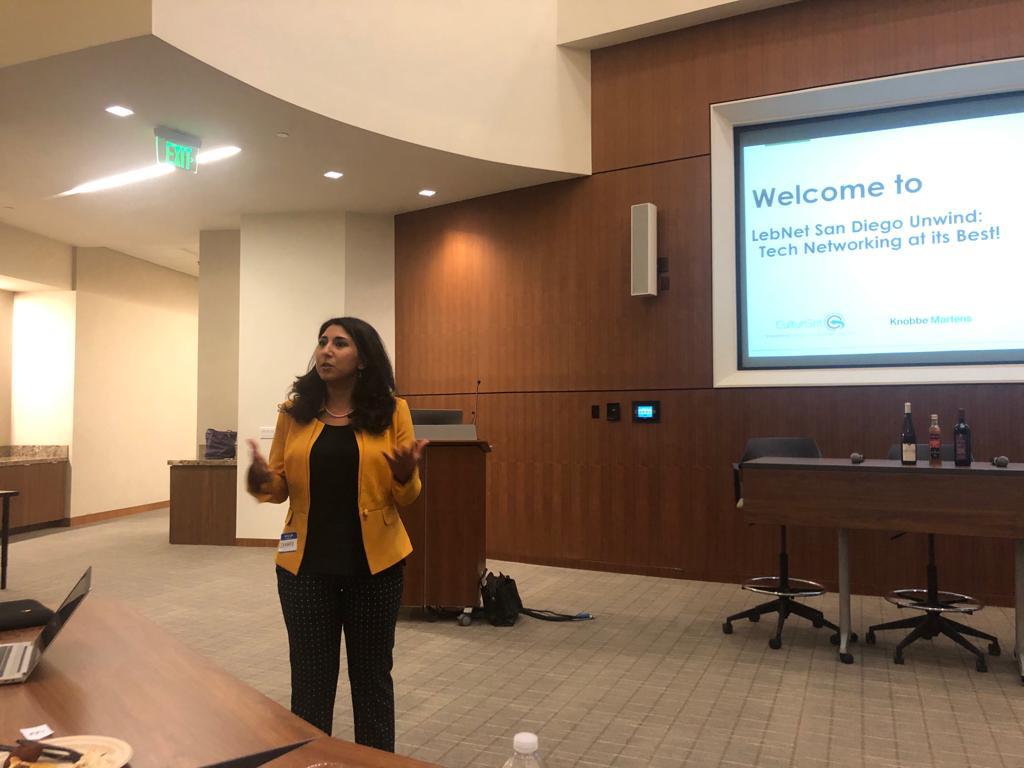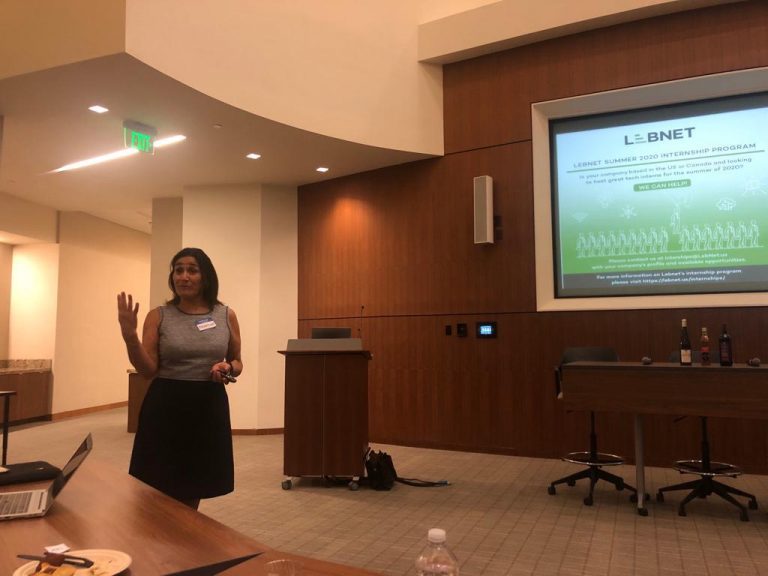San Diego - Nov 7, 2020
On November 7th, LebNet hosted a networking event in San Diego, sponsored by CulturGrit and Knobbe Martens.
LebNet San Diego steering committee members Andrew Tebsherani and Samara Hakim, the founder and president of CulturGrit kicked off the evening with a few remarks on the format and Tebsherani introduced the Tech trivia and prizes: three bottles of wine and Amaredeen drinks.
LebNet’s CEO George Akiki spoke about LebNet’s 20-year anniversary, milestones, and the LebNet Bireme Award 2019: Entrepreneur of the Year, which will be announced during LebNet’s annual dinner in San Mateo on December 10.
His presentation was preceded by a short celebratory video where members, supporters and interns shared their experiences working or helping LebNet.

We will share the video shortly so stay tuned.
Internship Program Chair Jeanine Akiki explained what are the internship opportunities for 2020 – which some of them are open to AUB students in Lebanon pre-authorized to work in the US.
 She encouraged more prospective employers to give LebNet fist dibs on their internships as well as reached out to more students of Lebanese descent to apply online.
She encouraged more prospective employers to give LebNet fist dibs on their internships as well as reached out to more students of Lebanese descent to apply online.
Fram Akiki – who is the Vice President of Electronics and Semiconductor Industry at Siemens Digital Industries Software – talked about Beirut Digital District, a hub nestled at the heart of Beirut.
It is home to several VCs, startups, accelerators, incubators and coworking spaces. (Read more about the several support entities in Lebanon here)
During the networking session, Tebsherani introduced the tech trivia game. Check the Q&A at the bottom.
-
High-Tech: What is the range of the 5G signal?
- 50 m from the tower
- 500 m from the tower
- 3 km from the tower
-
Biotech: In 2003, it cost $2.7 billion to sequence the 1st human genome. How much does it cost now using New Generation Sequencing technology (pioneered by ILMN)?
- 1M USD
- 10K USD
- 1K USD
-
Biotech/ data storage: How much data can 1 g of DNA store (when digital data is encoded into DNA)?
- 215 Petabytes (215 million gigabytes)
- 100 Terabytes
- Not feasible
